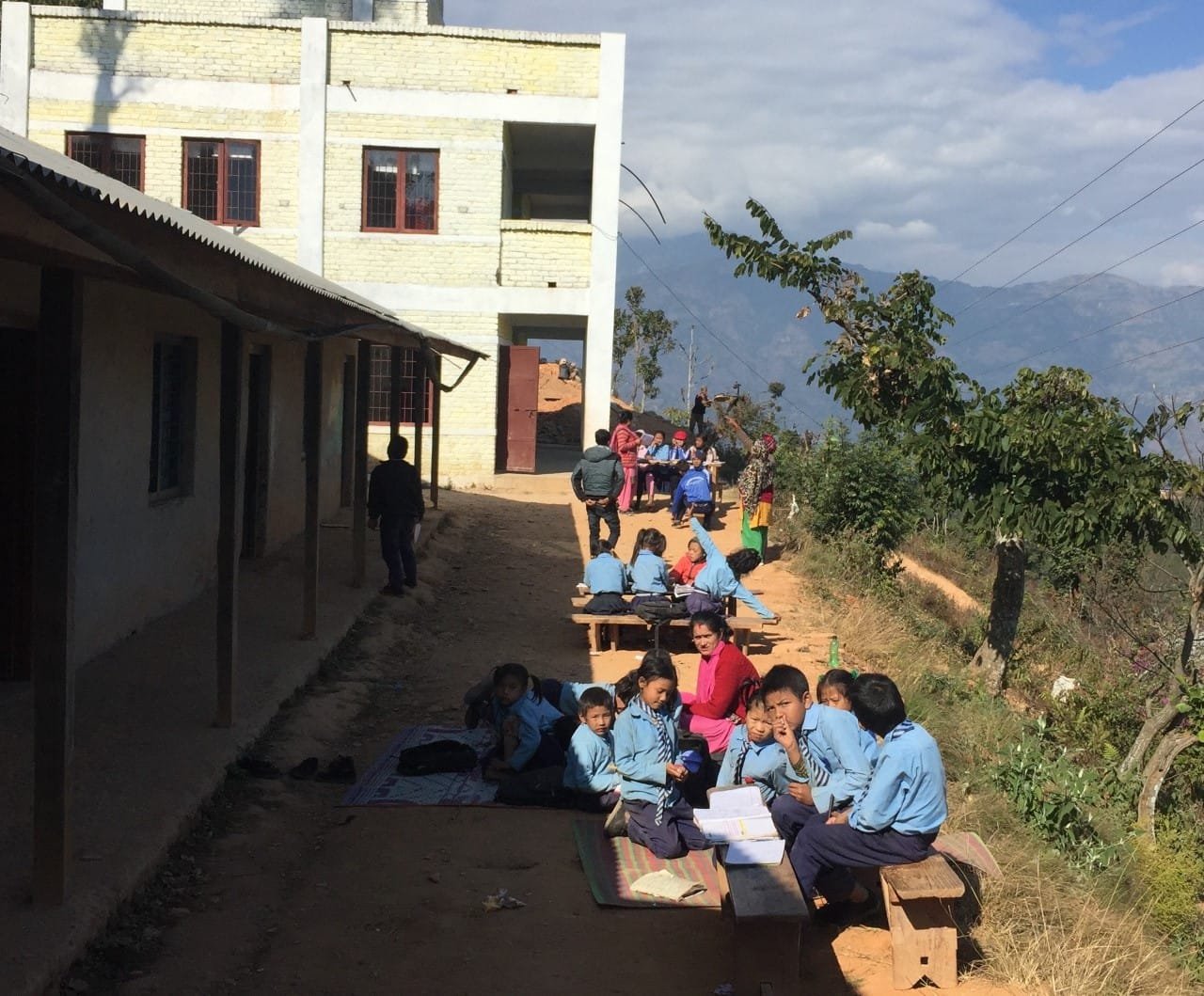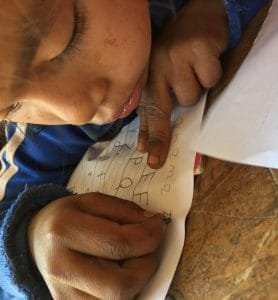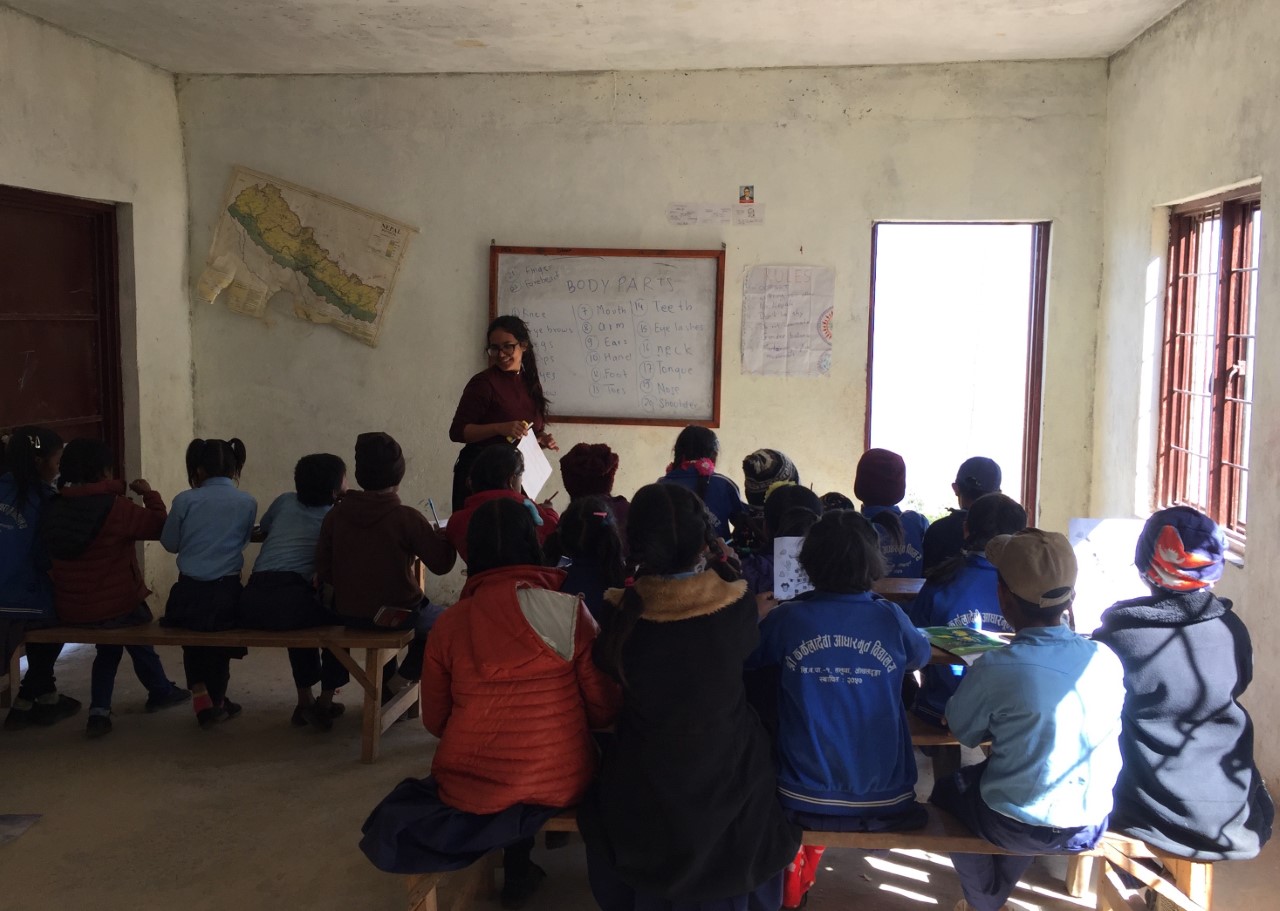I was volunteering in a Child Protection project in Nepal with the organisation Volunteers Initiative Nepal (VIN). I was working in five schools in the rural area of Nepal, in a little village called Nishankhe in Okhaldhunga District, around 10 hours from Kathmandu. I lived with other volunteers, international and local, for four months from November to March, before we were evacuated due to the Covid19 pandemic. The local people welcomed us with open arms and was a fulfilling experience that I could never imagine living.
During my volunteering, I had a lot of feelings, most of the time was kind of courage and admiration to see how children are studying in adverse conditions. In this article, I will explain some of the situations from my volunteering work that led me to had those feelings.
Apart from working in a rural area, I had the opportunity to visit some public schools in Kathmandu. The schools that I visited were huge, with many students. One of these schools has 3.000 students. In a classroom were ninety students in a single room. Just one teacher for ninety students, it was shocking.
In an interview with a vice-principal from one of these public schools, he explained to me that almost all the resources that they own were from former students. What they created was a collaborative network with the former students to help the school.
Going back to my experience in the rural area, the conditions are a lot different from the capital. The infrastructures of the schools are extremely poor. The classrooms are so cold that many teachers decide to do their class outside looking for the sun’s heat. In winter, you can see almost all the children with a common cold because of the long time freezing and the bad clothing. That was one of the hardest things to see.

As I said before, the infrastructures are in bad condition and also the walls are white and very dirty. Talking with the teachers, one of them told us that one day, she found the children using rainwater on the walls as painting colours, and all the children were happily collecting water from outside to paint the wall. She felt so desperate when she saw them colouring with water… And that made me think of how many teachers have that same feeling.
In the rural area is common that children walk around one or two hours to get to school every day going down and up hills. When is raining, the dust roads became mud roads increasing the risk. This reality was admirable, the strength of will that these kids have every day is incredible.
 In Nepal, there are many barriers to have an inclusive education, even in the schools visited in Kathmandu teachers were not train to provide inclusive education. In my work, I was also doing schools profiles and one of the questions that I was asking was if there were children with special needs or learning difficulties. In a school, the principal answered me that they have a kid with some difficulties but they were not sure about what kind of special needs the kid has. The description that they told was that the children cannot talk, listen or doing things properly. I was confused, wondering what kind of special need could be.
In Nepal, there are many barriers to have an inclusive education, even in the schools visited in Kathmandu teachers were not train to provide inclusive education. In my work, I was also doing schools profiles and one of the questions that I was asking was if there were children with special needs or learning difficulties. In a school, the principal answered me that they have a kid with some difficulties but they were not sure about what kind of special needs the kid has. The description that they told was that the children cannot talk, listen or doing things properly. I was confused, wondering what kind of special need could be.
Suddenly, one day doing a lesson a kid with Down Syndrome appeared in the door looking at what we were doing. The kid was walking around the school while the other children were in class. At that moment I realise the important need to train and inform the teachers about the diverse kind of students that there are and how to identify their needs. The teachers explained to me that they were unable to teach that kid and for that reason, the kid was walking around.
Another experience that I lived was that to find teaching materials in these schools was almost impossible. Classrooms only have a blackboard and often in bad condition. So for our lessons, we carried all the materials that we needed to teach. One day looking at how they were studying I found a kid writing with a very small pencil lead. I was shocked to see that the only pencil that the kid had was a pencil lead. And with the time, to find this kind of situation was common.
Due to all these difficult situations, the organisation Volunteers Initiative Nepal (VIN) is working in this area playing a significative role in this community. In my volunteering experience, I have seen how is their response to overcome some of those issues.
First of all, when I arrived in Nishankhe, VIN was finishing to build the NaraTika Community Learning Center, a huge building with the propose to empowering the people bringing nonformal education programs to young and adult people. At the same time, a big group of volunteers from the Mahrberg Library came to rigged the installations with learning materials and raise awareness about the new learning centre in schools.
Secondly, VIN has been working in collaboration with PiSL (Partners in Sustainable Learning) providing funds to pay the salary of ECD teachers and training for the local community related to education and leadership. Diann Grim, PiSL’s director, whom I had the pleasure to meet during my experience, provided also with teaching materials to the teachers always followed by training.
Thirdly, VIN has a scholarship program that aims to protect the rights of all the children in the community by providing access to the basic level of education. Most of the children at Okhaldhunga are not completing their primary education because of their family economic status.
One of our contribution to this volunteering project was to create a need assessment to provide with basic information about the community to the next volunteers because when we arrived we could not know much about the area, in this way the next volunteers can have an overview about the needs of the community.
Also, we were working in different schools providing English lessons and art and craft workshops with waste materials. Our main objective was encouraging them to express themselves by improving their soft skills and practising their English in real conversations. Further, we were showing teachers other ways to teach apart from the teacher-centred method.
Finally, before we were evacuated, we developed a network of projects to raise funds for different needs of the community, but unfortunately, because of the pandemic, we could not launch it. Hopefully, the next volunteers can help us to do it.
I would like to finish this article with some words that the vice-principal from that school in Kathmandu share with me during the interview. We were talking about motivation. For him, the best way to motivate them was to be behind the student, to become their friend. He told me “Students are crops and the school is the land. We, the teachers, are the farmers. If you take care of your crops, you can have good crops. And when you have good crops you will satisfy yourself. But by destroying your crops, what will you have in return? So farmers must take care of their crops. We must be together with the students if we want to have a good return. As a farmer with crops and as teachers with students.”
Catalina Morales Gaete – European Union Aid Volunteer


 Member of
Member of
great task